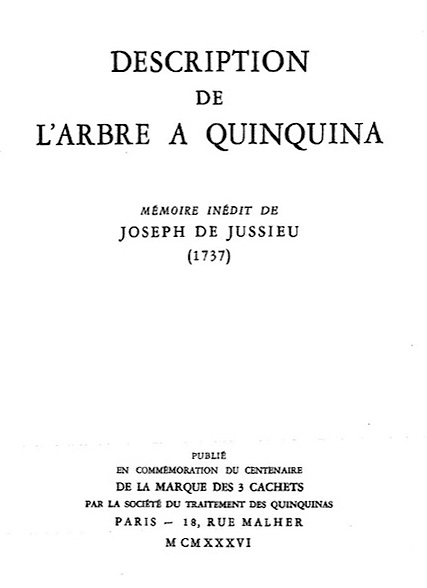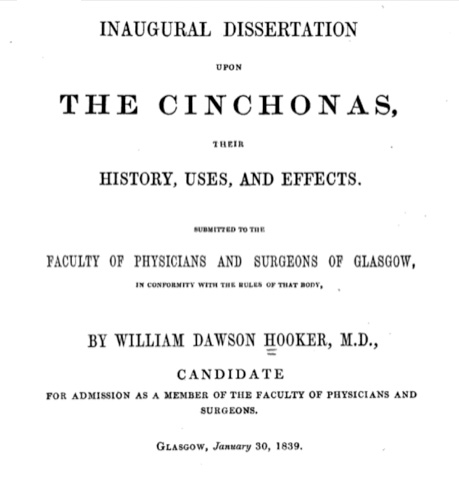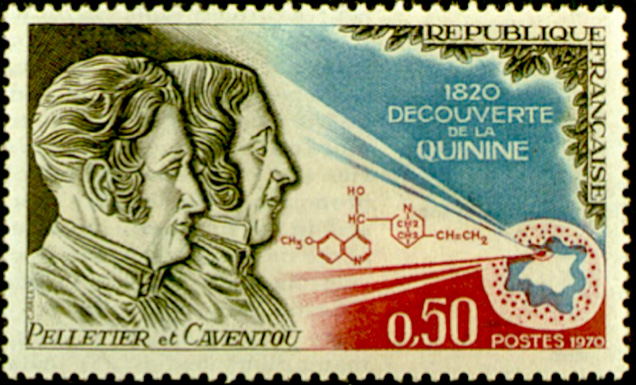Abstract
Cinchona bark was first recorded as a cure for malaria by the Spanish in Peru around 1630. A Spanish missionary allegedly learned of the treatment from the Indian natives. Cerebral malaria caused by Plasmodium falciparum is life threatening and one of the commonest encephalopathies in the world. Quinine was the first effective treatment, discovered in the bark of quina-quina, cinchona, ‘the fever tree’ in Peru in 1633. Many tales – many fanciful – relate to its early use. Foremost of the discoverers in 1735 was a group of French scientists in an expedition to Peru directed by the Parisian Academie Royale des Sciences. It was then widely exported and employed in Spain, Italy and Britain to become the standard treatment.
From its first recorded use to cure malaria by the Spanish in Peru around 1630, the history of Cinchona bark is a mixture of facts and legend.
Cerebral malaria caused by Plasmodium falciparum is one of the most common encephalopathies in the world. In 2017 mal-aria (Italian: bad air) caused an estimated 435,000 deaths (WHO). Female Anopheles mosquitoes transmit Plasmodium falciparum sporozoites via the blood then enter the liver where they mature into schizonts, which multiply into merozoites and invade and burst erythrocytes; they are sequestered in deep vascular beds causing petechial haemorrhage and cerebral oedema [1,2]. Coma, epileptic seizures, retinopathy and brainstem symptoms due to raised intracranial pressure and oedema are the salient clinical features. Quinine was the most effective treatment until artemisinin derivatives were discovered.
Quinine was an active agent in one of the first cures for fevers, the bark of quina-quina, cinchona, ‘the fever tree’ and was described by Fra. Antonio de la Calancha, an Augustinian missionary. In Lima in 1633, he wrote: ‘the fever tree is made into powder and given as a beverage, cures the fevers and tertians;’ the tree grows in Loja [Loxa], Peru [3,4].

Cinchona bark derives from several species and hybrids of Cinchona trees (Rubiaceae), indigenous to Colombia, Ecuador, Peru and Bolivia. In the 1640s, Cardinal Juan de Lugo, a Spanish missionary allegedly learned of the treatment from the Indian natives and brought it to Spain (publishing his Schedula Romana,) where it was known as Cardinal’s powder [5]. Pedro Barba, Professor of Medicine in Valladolid, in 1642 first commended cinchona bark for the cure of tertian ague.
In 1735, the French scientists (Louis Godin, Pierre Bouguer, Joseph de Jussieu, (Figure 1) and the naturalist and mathematician Charles-Marie de la Condamine) led an expedition to Quito in Peru (now Ecuador) directed by the Academie Royale des Sciences in Paris. Its main purpose was to measure precisely one degree of latitude at the equator that would enable them to verify the shape of the earth, because Newton in Principia 1687 had controversially argued that it was an oblate spheroid – a sphere, squashed at its poles and swollen at the equator.

This expedition of French scientists was fraught with illness, deaths and much internal dissension. It was not completed until early 1743. After disputes with his colleagues, La Condamine set off alone through danger-ridden dense rain forests to head for Quita. On the way he encountered natives who told of an ancient tradition of the Andean natives, who successfully used bark, locally called cascara de Loxa from the arbol de la cascarilla (cinchona or China) [3] trees [6] to treat their fevers. Many apocryphal and fanciful stories are recorded of cures by native Indians for agues and fevers [4]. They recognised three species, the most effective one characterised by its red bark [5,7]. It is however, unlikely that native Indians used this remedy, for Hooker’s dissertation (Figure 2) later claimed:
Native Indians never will use the Cinchona as a remedy, but consider it as a medicine producing gangrene and death: they prefer an almost certain natural death to what they consider as poisoning themselves [8].
La Condamine published his botanical work in 1738 [9]. Cinchona became known as the Peruvian, Jesuit’s bark, or the Countess’s powder. Another improbable legend relates that the Spanish Countess of Cinchón, the wife of the Viceroy of Peru in 1638 became ill with intermittent fever in the palace of Lima. Don Francisco Lopez de Canizares, the Corregidor of Loxa (who had been cured of fever by the same drug), gave the powdered bark to her physician, Juan de Vega. The countess recovered rapidly and ordered its widespread distribution [6]. Carolus Linnaeus (1707-1778) gave the name Cinchona to the quina-quina tree. His misspelling of the Countess’s name has continued [10].

When Cinchona was transported to Spain, Italy and Britain its medicinal value was much argued since the separation of malaria known as tertian fever from other agues was far from precise. Thomas Sydenham (1624-1689) in his Methodus Curandi Febris (1666) emphasised its value in malaria and Willis observed it in daily use, although malaria was thought to be rare in Britain at the time. The more general introduction of cinchona bark in England has been attributed to Robert Talbor (Figure 3), who in 1671 made his fame and fortune exploiting his ‘secret remedy.’ Though a medically unqualified apothecary, he successfully treated the fever of Charles II and in 1672 was appointed physician to the King, and was later knighted. In 1677 cinchona first appeared officially in the London Pharmacopoeia as Cortex Peruanus.
Two hundred years later, Pierre Pelletier and Joseph Caventou (Figure 4) isolated quinine alkaloid from the bark in 1820 [11]. Cinchona contains Quinine, and other alkaloids: quinidine, cinchonine and cinchonidine. Each has rapid schizonticide activity against the erythrocytic forms of Plasmodium species. Synthetic antimalarials were developed and chloroquine became the drug of choice. Chloroquine-resistant strains of P. falciparum developed and are now treated with artemisinin derivatives: artesunate (C19-H28-O8) and artemether. Artesunate is currently the treatment of choice for falciparum malaria.

References
- Newton CRJC, Hien TT, White N Cerebral malaria. Journal of Neurology, Neurosurgery & Psychiatry 2000;69:433-441. https://doi.org/10.1136/jnnp.69.4.433
- Brown H, Hien TT, Day N, et al. Evidence of blood-brain barrier dysfunction in human cerebral malaria. Neuropathol Appl Neurobiol 1999;25:331-40. https://doi.org/10.1046/j.1365-2990.1999.00188.x
- Heinrich von Bergen. Versuch einer Monographic der China. Edinb Med Surg J. 1826/7;27(90):118-136.. https://www.ncbi.nlm.nih.gov/pmc/articles/PMC5763177/pdf/edinbmedsurgj72398-0125.pdf
- Thompson CJS. The history and lore of cinchona. Br. Med. J. 1928;2:1188-1190. https://doi.org/10.1136/bmj.2.3547.1188
- Gachelin, G, Garner, P, Ferroni, E, Tröhler, U, Chalmers, I. Evaluating Cinchona bark and quinine for treating and preventing malaria. Journal of the Royal Society of Medicine 2017;110(1), 31-40. https://doi.org/10.1177/0141076816681421
- Haggis AW. Fundamental errors in the early history of cinchona. Bulletin of the History of Medicine, 1941;10:417-459.
- Greenwood B. ‘The Fever Trail: In Search of the Cure for Malaria.’ Nature Medicine, 2002;8(12):1346. https://doi.org/10.1038/nm1202-1346
- Hooker WD. Inaugural Dissertation Upon The Cinchonas, History, Uses, And Effects. Faculty Of Physicians And Surgeons Of Glasgow,, 1839.
- de la Condamine CM. Sur l’arbe Quinquina, Historie de l’académie Royale des Sciences. 1738. 226-243.
- Thompson CJS. The History And Lore Of Cinchona. Br Med J. 1928; 2(3547): 1188-1190. https://doi.org/10.1136/bmj.2.3547.1188
- Pelletier, J, Caventou, JB. Analyse Chimique des Quinquinas. Paris: C Colas, 1821.